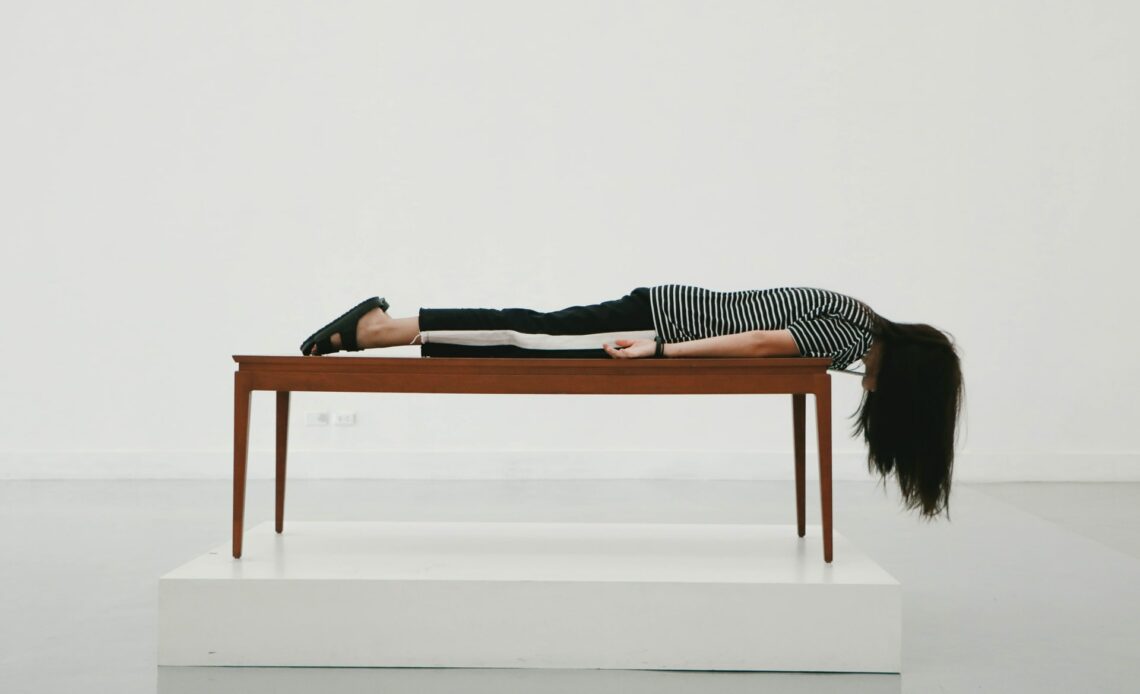
Have you been in a situation where you just started drifting to sleep, and suddenly a terrifying creature settles on top of you— whispering cacophonous words, pressing your head and limbs until you suffocate?
That is what happens when you’re experiencing sleep paralysis. A spine-chilling phenomenon that disables a person from moving or speaking upon falling asleep or awakening.
Sleep paralysis can cause a person to fear the mere thought of sleeping. But with the right knowledge, you can gain power over it.
What is Sleep Paralysis?
According to Sleep Foundation, Sleep paralysis is a condition where atonia, or a brief loss of muscle control when sleeping or awakening.
While under sleep paralysis, you might hallucinate vivid dreams, which can lead to feelings of high levels of anxiety, and intense fears, just like during nightmares.
Sleep paralysis can happen to anyone, as it is common in occurrence and universality. It is also associated with certain conditions, such as excessive alcohol consumption, increased stress, narcolepsy, and sleep deprivation.
There are two categorized causes of sleep paralysis in the medical literature:
Isolated sleep paralysis
It is when the episodes of sleep paralysis are not related to a prevalent diagnosis of narcolepsy, a neurological disorder that stops the brain from controlling wakefulness and often results in sleep paralysis.
Recurrent sleep paralysis (RISP)
RISP involves multiple episodes of sleep paralysis over time.
These two cases can be combined to describe a condition of RISP in someone who does not have narcolepsy.
The Spiritual Meaning of Sleep Paralysis
Sleep paralysis has different meanings across cultures. Different cultures worldwide have already recorded many sleep paralysis incidents, and almost all of them attribute them to supernatural phenomena.
The Canadian Inuit people associate the occurrences with shamanic spells, while Brazilian popular folklore attributes them to demons, and they have even named those demons ‘Pisadeira’. It means a hag (ugly older woman) with lengthy fingernails who creeps along the rooftops to descend upon sleeping victims and trample over their chests.
In the Orient, Japanese folklore describes them as wrathful spirits known as ‘Kanashibari’ that suffocate their earthly enemies during sleep. It is said that victims of Kanashibari are cursed and are magically tied to their sleep by evil entities.
In old Norse, the Mara, an evil spirit, straddles the sleeper’s body as if riding a horse, then strangles them. The term mara is where the English word nightmare originated.
Spiritually, sleep paralysis was said to result from a person’s lack of faith or a representation of one’s dark side and deepest secrets.
Cultural Significance of Sleep Paralysis
Despite having universal core features, how we experience sleep paralysis varies according to place, culture, and time. Some scientists suggested sleep paralysis to explain reports of spiritual and paranormal events such as alien visits, demonic possessions, night hag experiences, and ghosts.
Culture may be a huge factor in honing sleep paralysis. Sleep paralysis takes on greater salience when interpreted through a certain cultural filter.
For instance, if sleep paralysis is feared in a specific culture, this fear could result in a conditioned fear, thus worsening the experience. Concerning this idea, long durations and high rates of atonia during sleep paralysis have been found in Egypt. According to studies, Egypt has an elaborate belief involving the Jinn; an evil spirit said to be the cause of sleep paralysis.
Sleep Paralysis as a Door to New Opportunities
In her article for Aeon, Karen Emslie described sleep paralysis as a doorway to new opportunities. She said that beyond the sheer terror of sleep paralysis, it could lead to extraordinary, thrilling, and enjoyable altered states.
You can achieve the lucid dream state, where you can control every aspect of your dreams and manipulate their outcomes. In your dream, you can travel to remarkable landscapes and interact with creatures you’ll never see in your waking life.
Another is the out-of-the-body experience (OBE), the waking sensation of being able to separate from your physical body and go beyond the world’s limitations.
What Happens During sleep Paralysis?
Atonia, or the inability to move the body, is the fundamental symptom of sleep paralysis. It happens shortly after waking up or falling asleep, and during an episode, a person is conscious and aware that they are under atonia.
It is estimated that 75 percent of sleep paralysis episodes involve hallucinations different from normal dreams. As with atonia, these can occur when a person falls asleep (hypnagogic hallucinations) or wakes up (hypnopompic hallucinations).
Sleep paralysis hallucinations fall into three categories:
Chest pressure hallucinations
Also known as incubus hallucinations, which incite a feeling of suffocation. Chest pressure hallucinations frequently happen along with intruder hallucinations.
Vestibular-motor (V-M) hallucinations
Include out-of-the-body sensations or movements, such as flying.
Intruder hallucinations
It involves the feelings or perception of a dangerous person or presence in the room.
Causes of Sleep Paralysis
During your rapid eye movement (REM) sleep stage, you are likely to have your dreams. Your brain prevents the muscles in your limbs from moving to protect you from acting out your dreams and hurting yourself. Sleep paralysis occurs when you regain consciousness going into or out of REM.
Four out of ten people may have sleep paralysis. It is a common condition primarily noticed in the teen years and may be inherited within families. It is not clear why sleep paralysis occurs but factors that can trigger it include
- Lack of sleep
- Inconsistent sleep schedules
- A family history of sleep paralysis
- Substance abuse
- Mental health issues
How to Avoid Sleep Paralysis
In an article by News-Medical.net, they proposed the following measures to avoid experiencing sleep paralysis.
- Try sleeping on your side instead of on your back. Most of the time, sleep paralysis is triggered while you’re sleeping on your back.
- Try to calm down and concentrate on your breathing when under sleep paralysis attacks. A good grasp of the situation helps release the paralysis faster.
- Create small noises with your breath to alert your partner and wake up faster.
- Focus on making little muscle movements. You can move your toes or fingers. As you create these small movements, your remaining muscles will respond faster, ending paralysis.
- Try sleeping with the lights off. A dark room is the most ideal for quality sleep.
- Switch off all devices that may disrupt your sleep, or if you can’t switch them off, keep them outside your bedroom.
- Make sure that your room is comfortable for sleeping. Ensure your room’s temperature is cozy, and you have everything you need to sleep.
- Try exercising to tire out your body before going to sleep. Tired muscles allow the brain to slip faster into a deeper sleep.
Conclusions
Since ancient times, sleep paralysis has crept into our nights, making us fear the presence of darkness.
It is the Goliath of every sleeper, a phenomenon that will never cease to terrify us. But despite being deemed an impossible experience to escape from, sleep paralysis is highly possible to overcome. You have to understand how it works— and you’ll see how fairly harmless it is.
Discover More About the World of Dreams
Guides
- Dream Interpretation: A Complete Guide
- The Biblical Meaning of Dreams: Everything You Need to Know
- Understanding the Spiritual Meaning of Your Dreams (Explained)
- The Spiritual Meaning of Sleep Paralysis (Explained)
- Lost In Daydreams?: Everything You Need to Know
- A Beginner’s Guide to Lucid Dreaming: Everything You Need to Know
- Nightmares: Everything You Need to Know
- Astral Projection for Beginners: Your Complete Guide
Recommended Books
- 16 Best Books on Astral Projection You Must Read
- 14 Best Dream Books to Decode Your Dreams
- 14 Best Books on Lucid Dreaming
Common Dreams & Their Meaning
- 18 Most Common Dreams: A Complete Guide to Their Meanings
- Dreaming of Our Dead Relatives (Explained)
- Dreaming About Dying: Everything You Need to Know
- The Spiritual Meaning of Water Dreams (Explained)
- Understanding the Spiritual Meaning of Wet Dreams (Explained)
- The Spiritual Meaning of Flying in a Dream: A Complete Guide
- Dream of Being Held Hostage (Explained)
- Dreams of Being Lost: Meanings and Scenarios
- Crime Dreams and Their Meaning
- Crying in a Dream: A Complete Dream Guide
- Dreams About Having a Baby: Everything You Need to Know
- Dreams of Kissing Someone: A Quick Read
- Dreaming About Monsters: Everything You Need To Know
- Wedding Dreams: A Complete Dream Interpretation
- Flower Dreams: Your Complete Guide
- Dreaming About Plants: Complete Dream Scenarios and Meanings

